The renovation of the former Postapalota in Széll Kálmán Square, built between 1924 and 1926 based on the plans of Gyula Sándy, is slowly coming to an end. The building, renamed the Buda Palace, will house the Money Museum and the tower with iconic Art Nouveau style features will also be converted into a lookout tower. A gateway to Várfok Street is currently being built in the immediate vicinity of the building that survived the siege of Budapest, which will be really exciting not only to overcome the difference in level but also because the Buda Palace will have a completely new entrance that can be approached from the gateway.
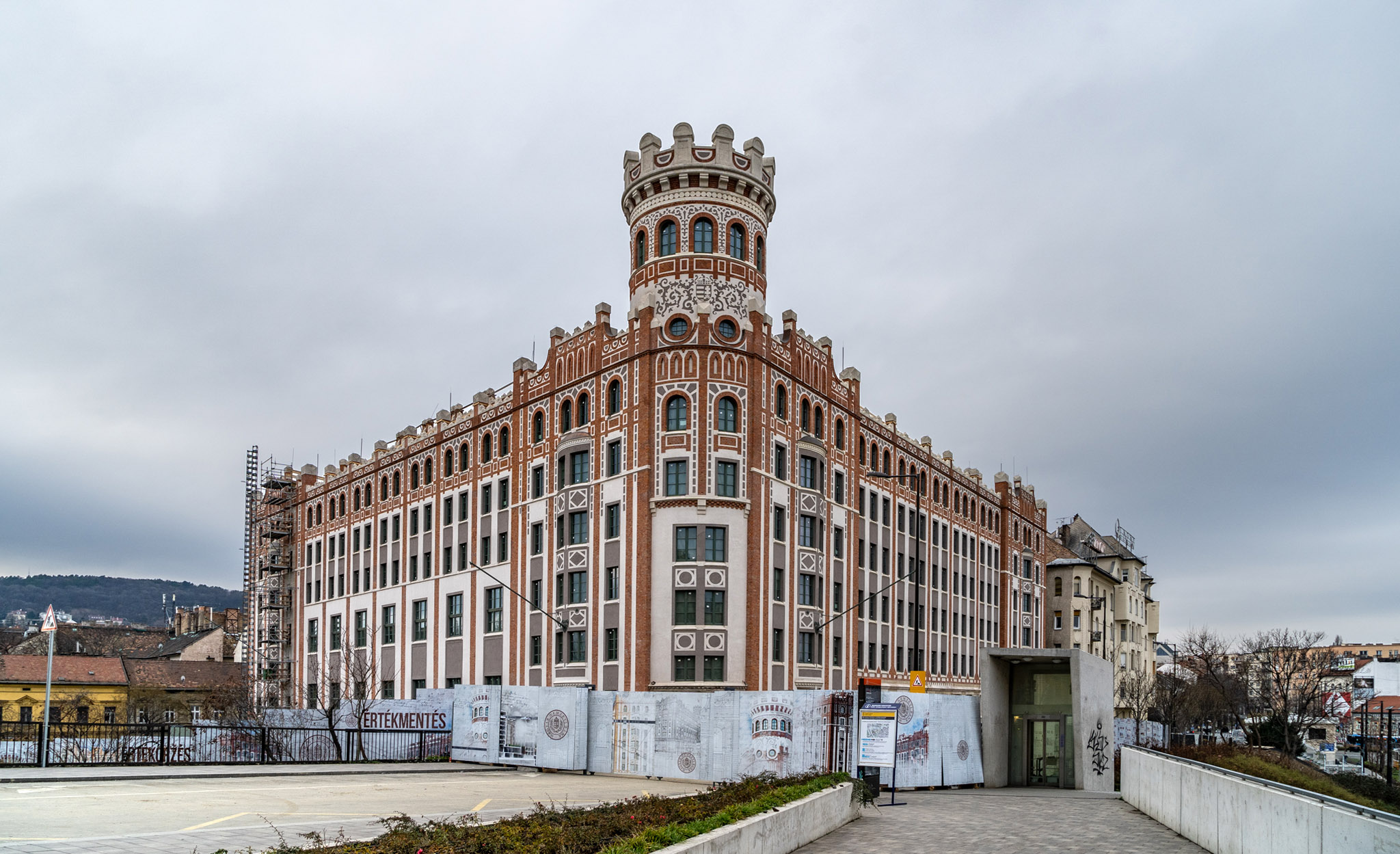
The money museum of the Hungarian National Bank will be located in the iconic building of Széll Kálmán Square, in the former Postapalota, which has already been renovated from the outside (Photo: Balázs Both/pestbuda.hu)
The construction of the gateway has been a topic for several decades, as the ramp at the foot of the former Postapalota cuts Széll Kálmán Square from Csaba Street and Városmajor for no reason. The topographic conditions of the area are quite special, as the place was not built before the Ottoman Era to ensure that the Castle could be defended. After the expulsion of the Turks, a clay mine and a brickyard were built in the area, which was dug out so deep that eventually, a quarry pond formed there, which was used as an ice rink from the end of the 19th century.
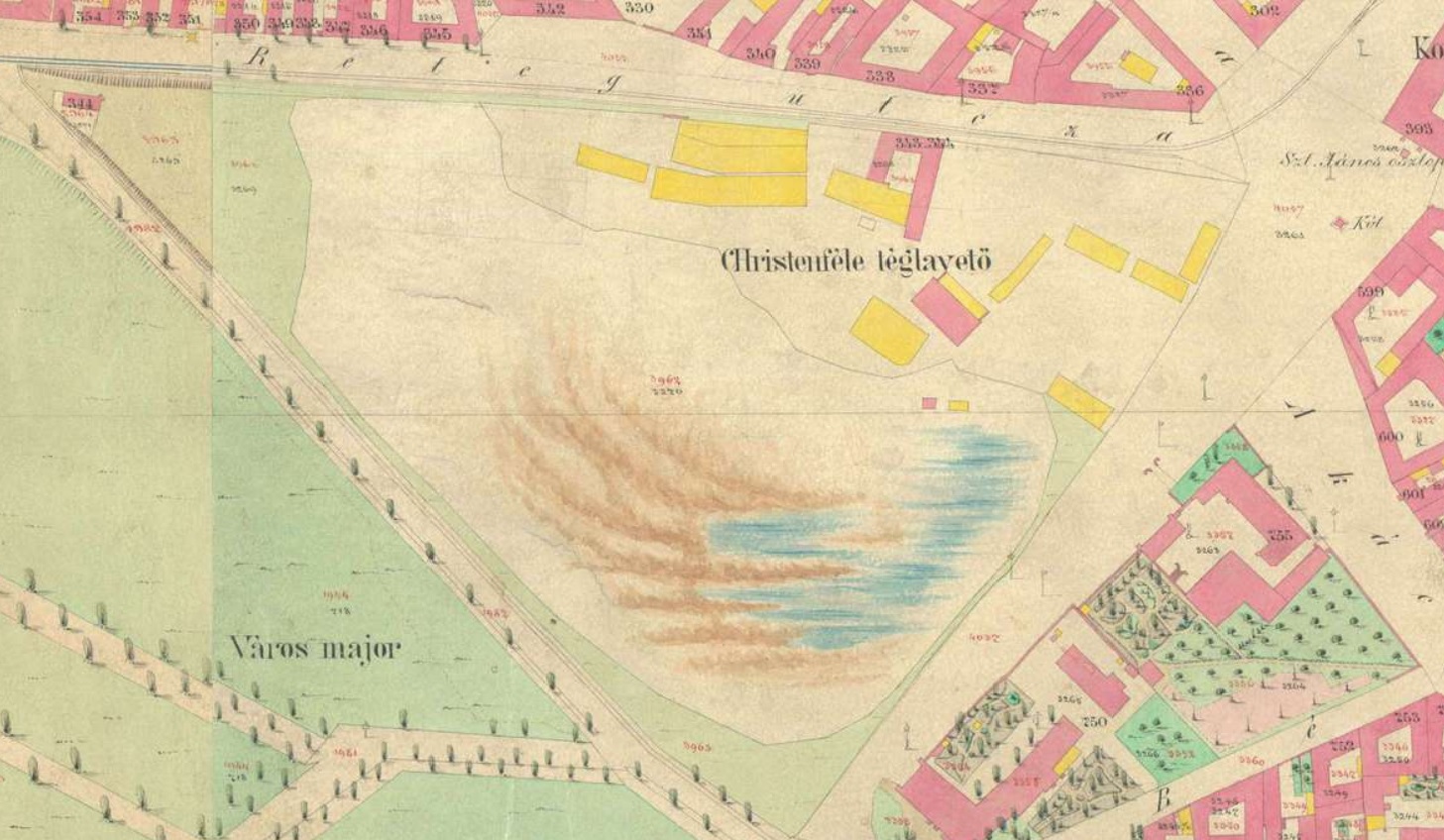
Christen's brickyard on the site of the current Széll Kálmán Square on a map from 1873 (Source: Mapire/Hungaricana)
When the mine closed, the area was managed by the Budapest (Buda) Gymnastics Association, where tennis courts, sports fields and huge ice rinks were established. The differences in the level of the area - due to the former clay mine and the later quarry pond - can still be felt to this day, despite the various constructions and fillings. Today's transportation hub was actually only built in 1941.
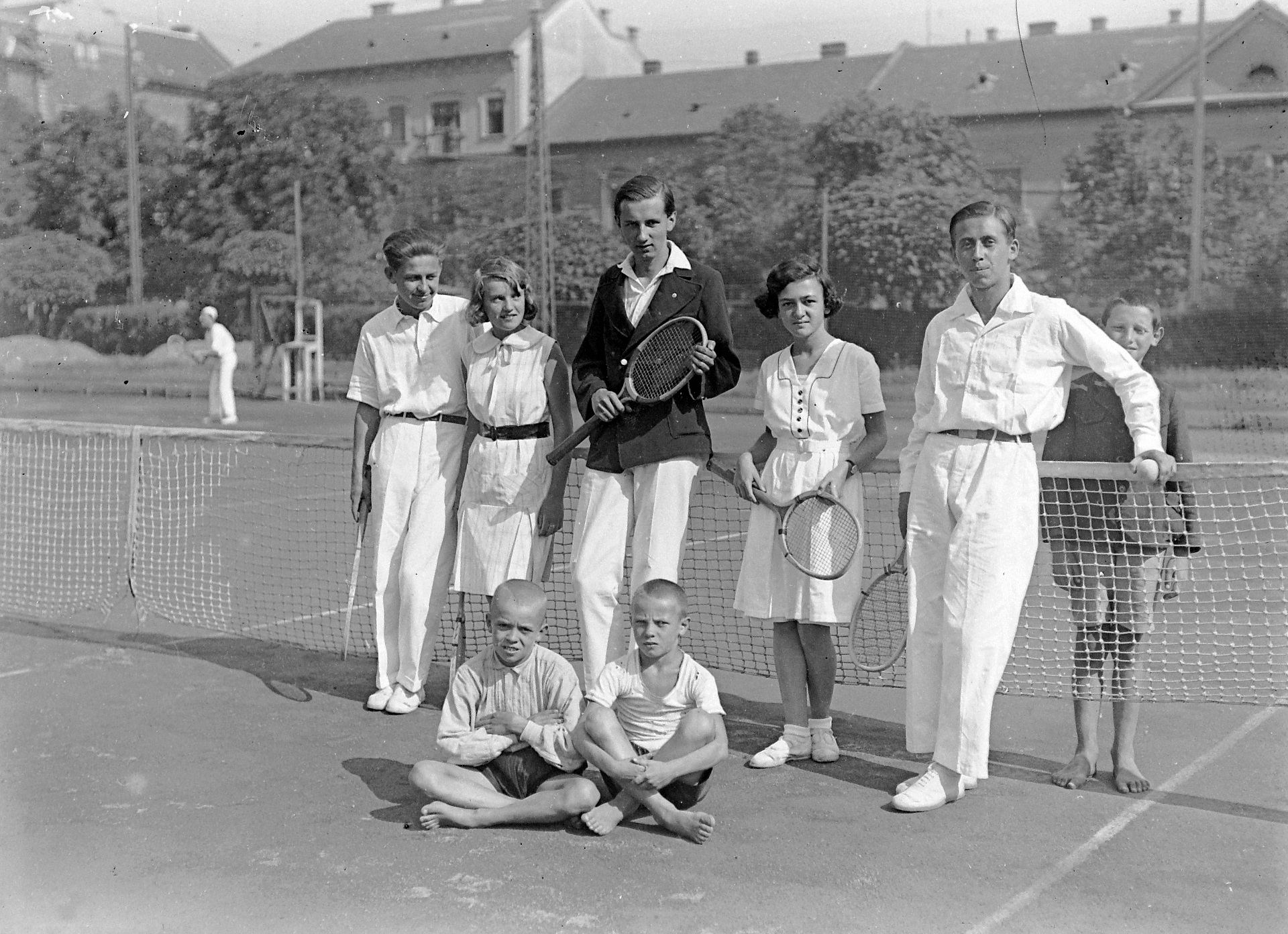
There were several tennis and sports courts in Széll Kálmán Square in the first third of the 20th century. The photo was taken in 1933 (Photo: Fortepan/No.: 10557)
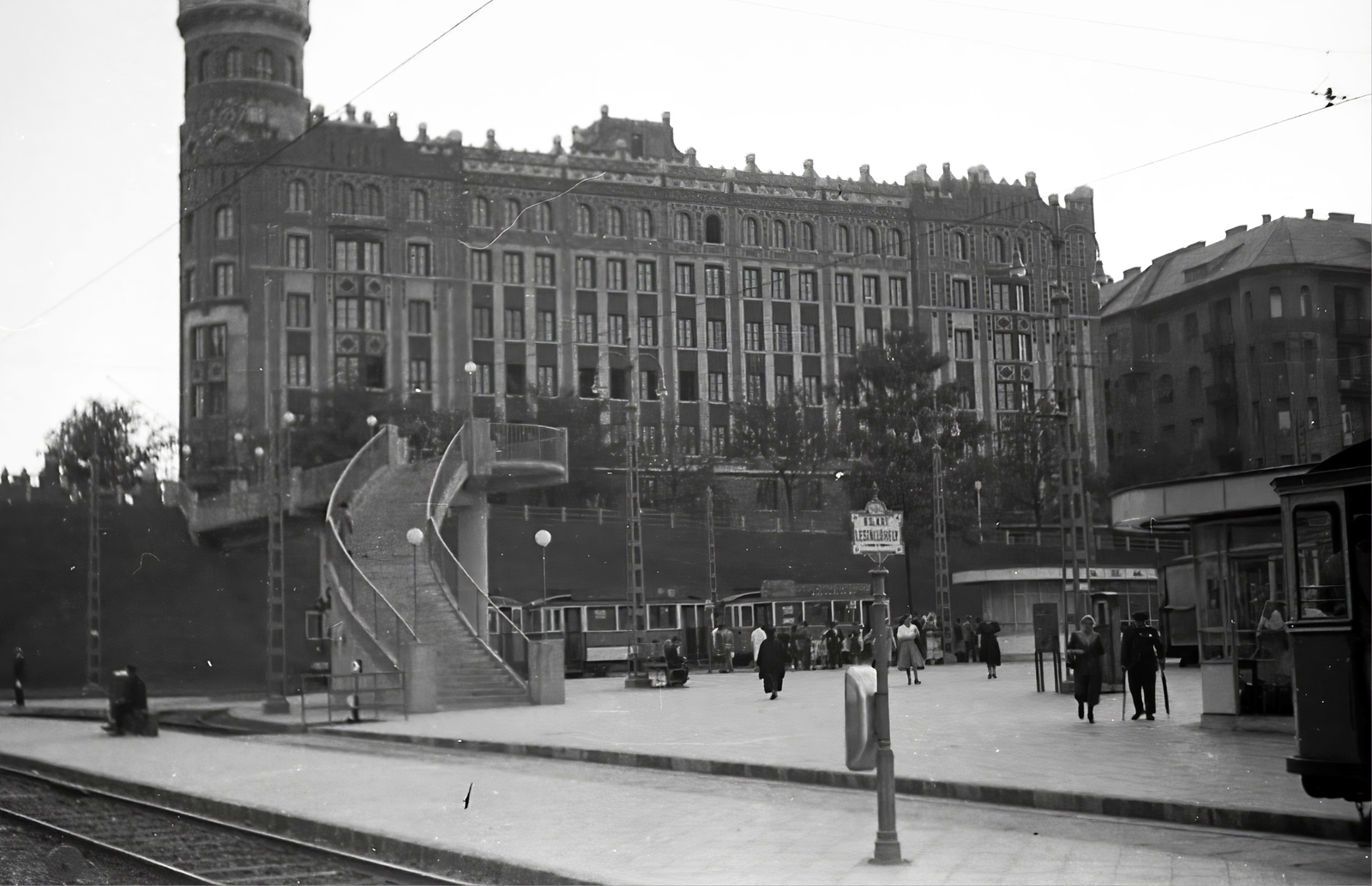
Széll Kálmán Square became a transportation hub in 1941, where pedestrians could go by several overpasses (Photo: Fortepan/No.: 174344)
The gateway was also planned in the renovation programme of Széll Kálmán Square 6 years ago, but the old plan was finally realised only in the autumn of 2020 when the construction of the pedestrian gateway was started in connection with the renovation of the Postapalota. At the beginning of the renovation of the Postapalota, the plan was revived together with the new owner of the building, the team at the Magyar Nemzeti Bank, which would not only create a levelled, accessible passage to Városmajor from the square, but it would also open a new entrance to the Art Nouveau building of the former Postal Palace, renamed the Buda Palace, and to the Museum of Money and Banking History to be established here.
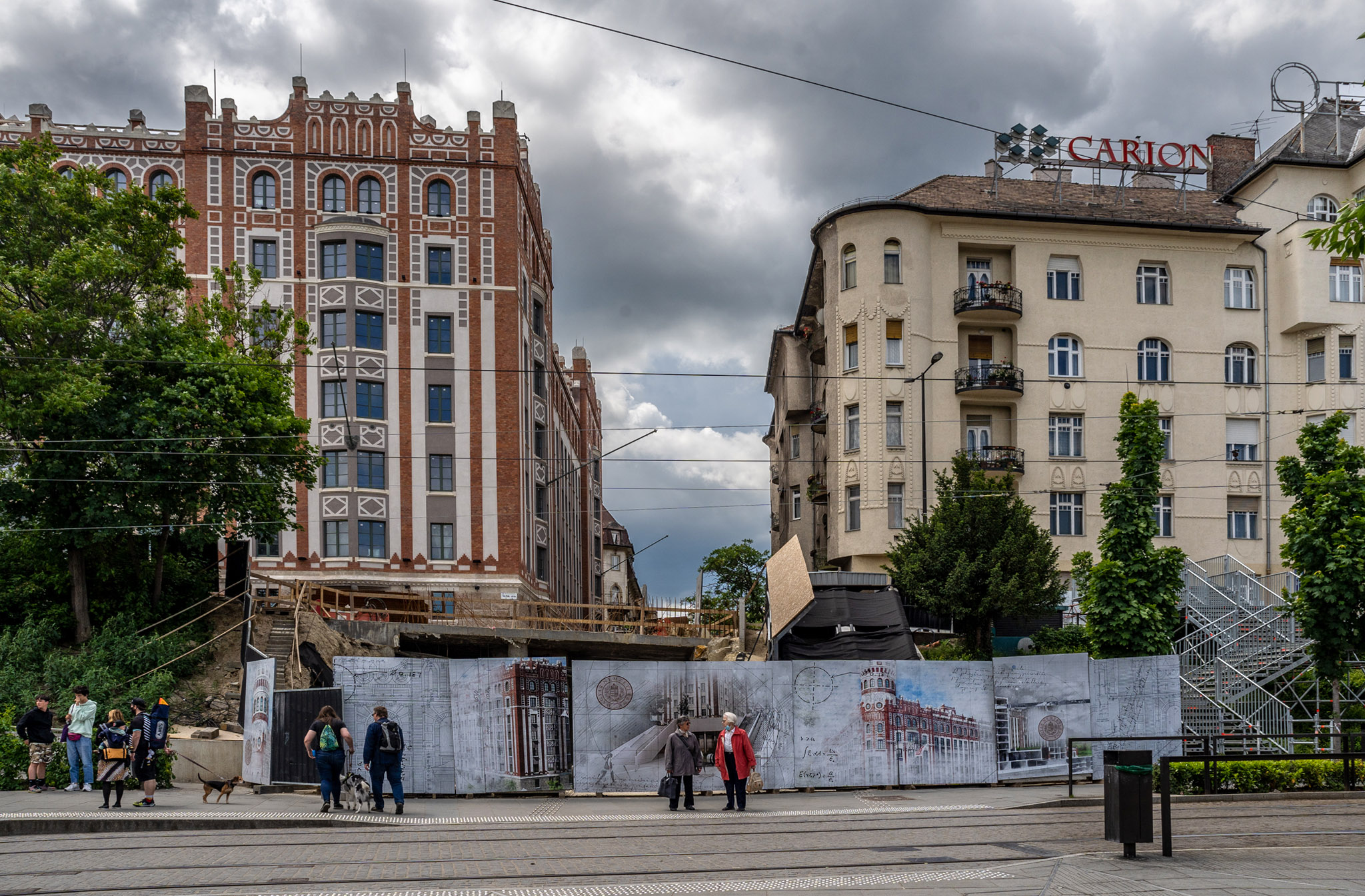
The construction has been going on since last autumn, which was covered with dividing walls depicting the former Postapalota in the background (Photo: Balázs Both/pestbuda.hu)
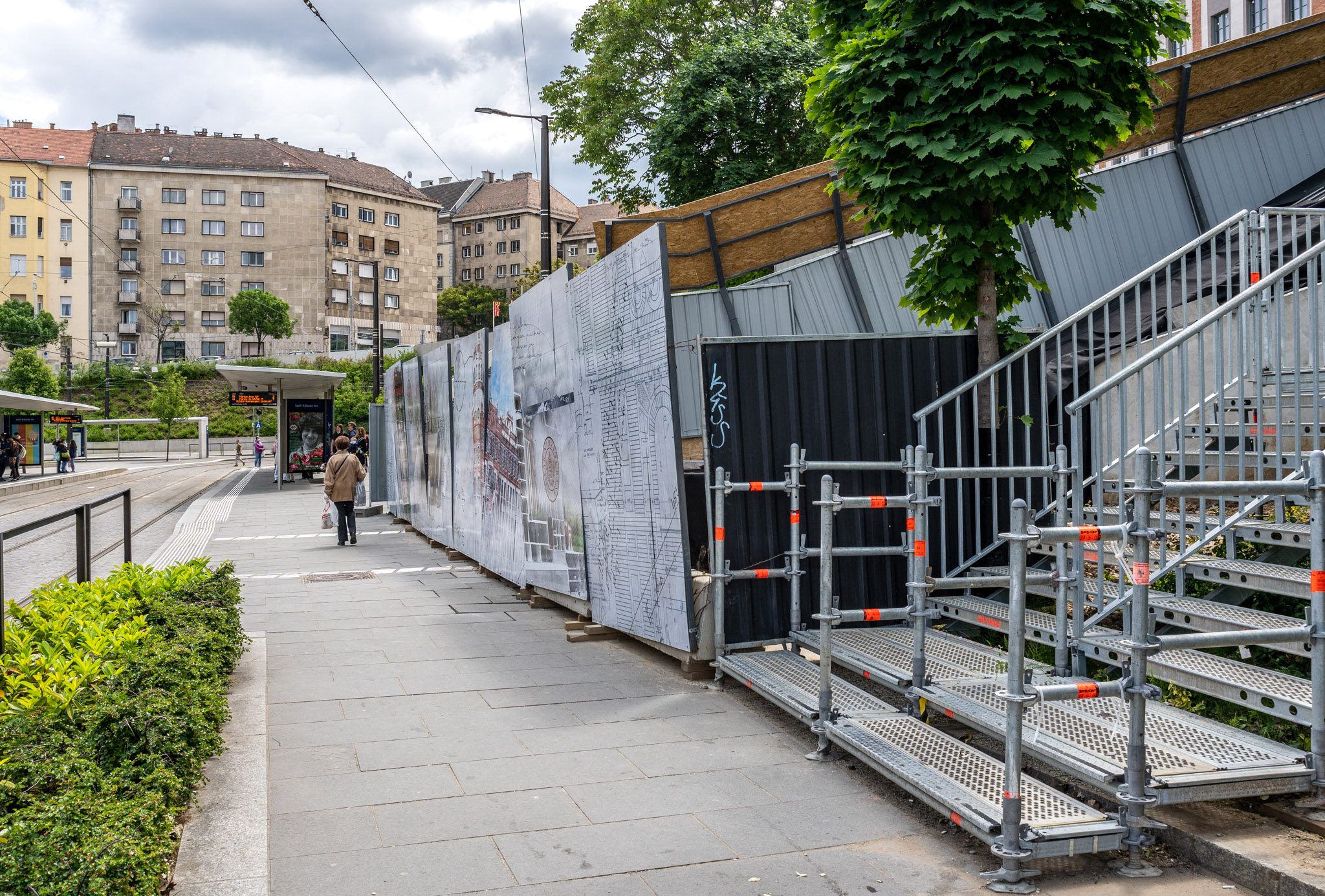
A temporary staircase was built next to the construction site so that pedestrian traffic would not be obstructed (Photo: Balázs Both/pestbuda.hu)
The published design renders show that the escalators will be retained, and the gateway will open in place of the current flight of stairs. The two ends of the passage met on 12 May this year under Várfok Street.
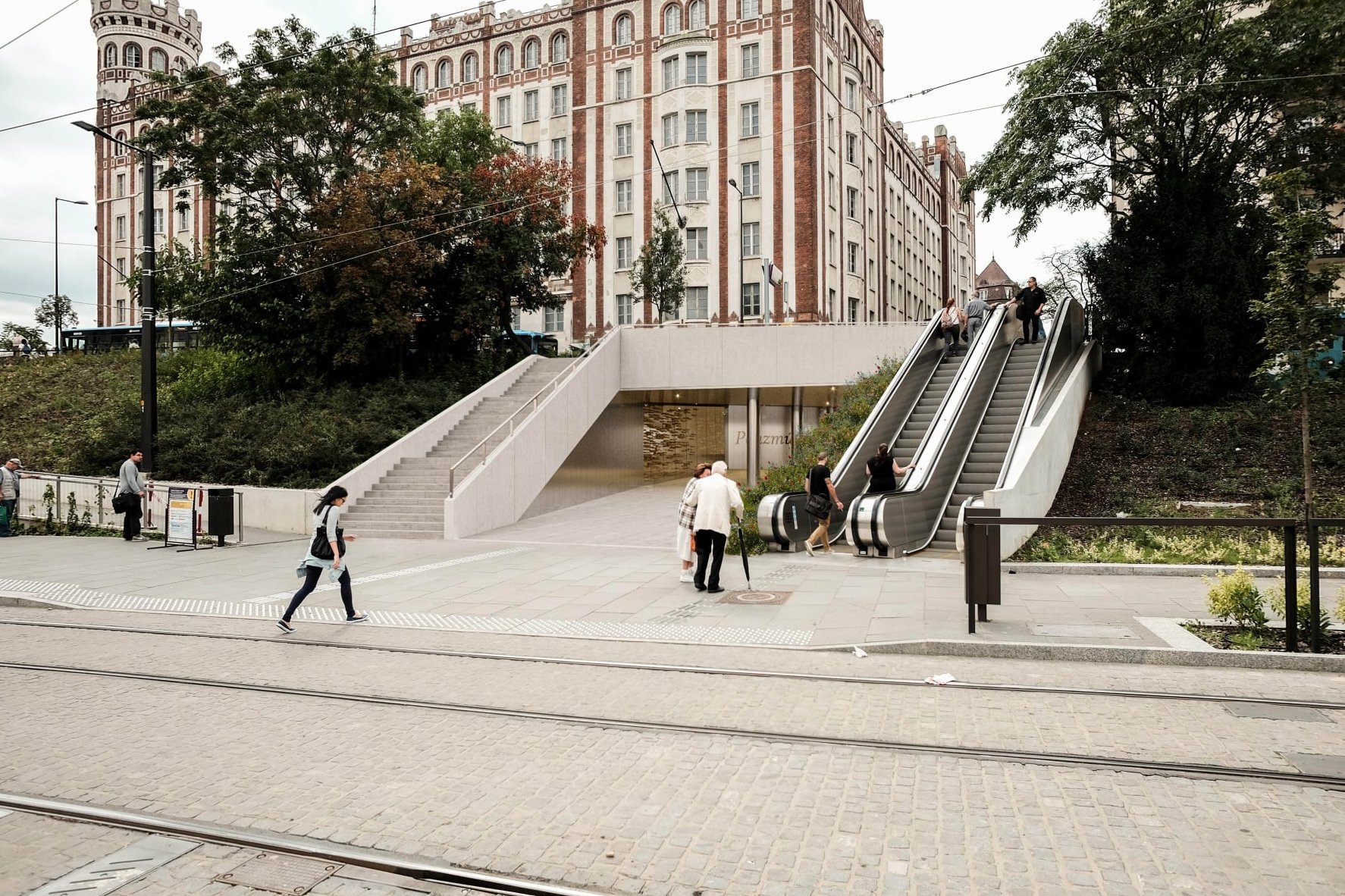
Render of the gateway seen from Széll Kálmán Square (Design render: Építész Stúdió, Source: Dávid Vitézy's Facebook page)
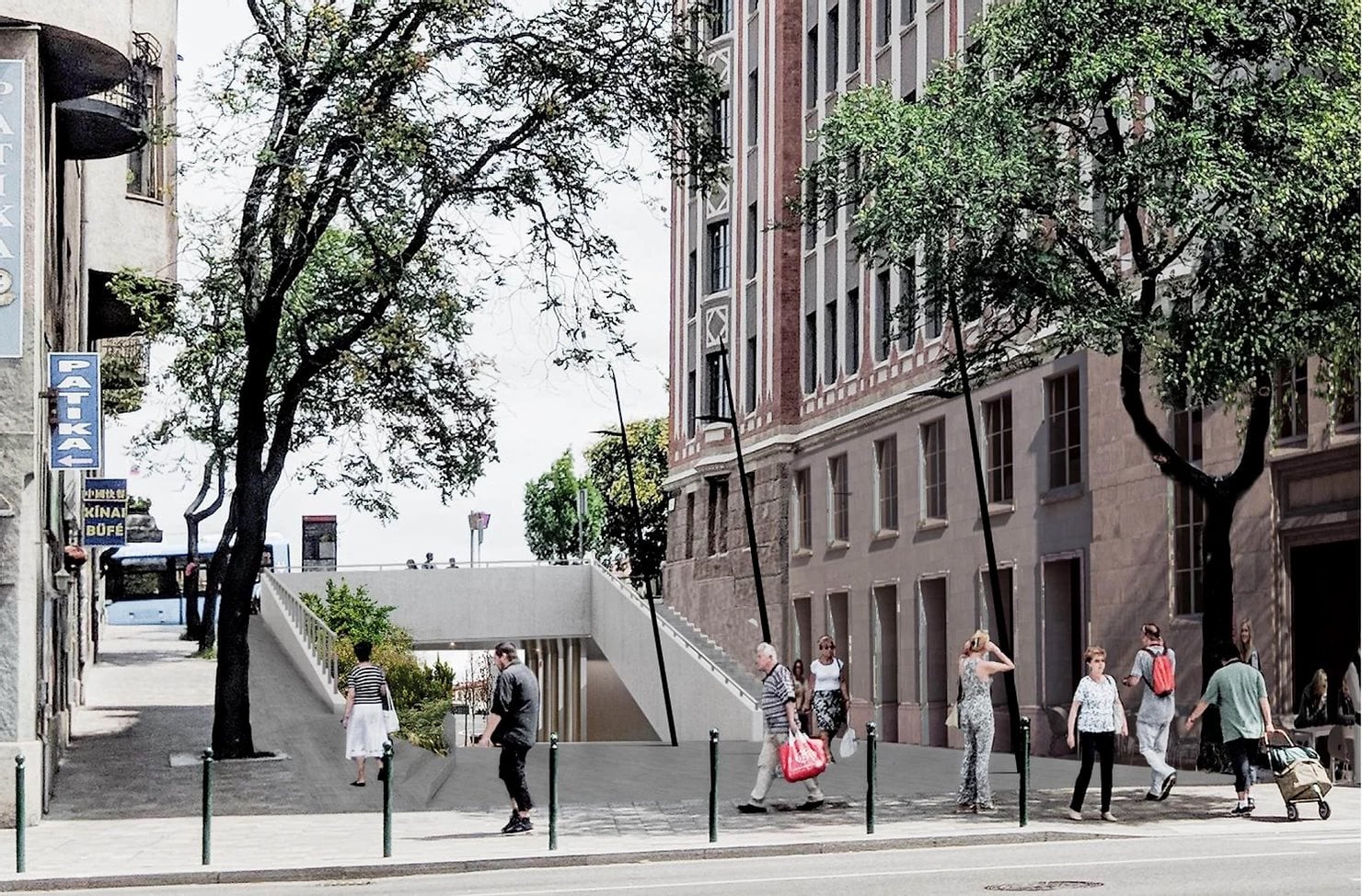
Render seen from Városmajor. The sloping design will also be retained, but the basement part of the Postapalota will be designed to fit the building, so it will be possible to use the stairs (Design render: Építész Stúdió, Source: Dávid Vitézy's Facebook page)
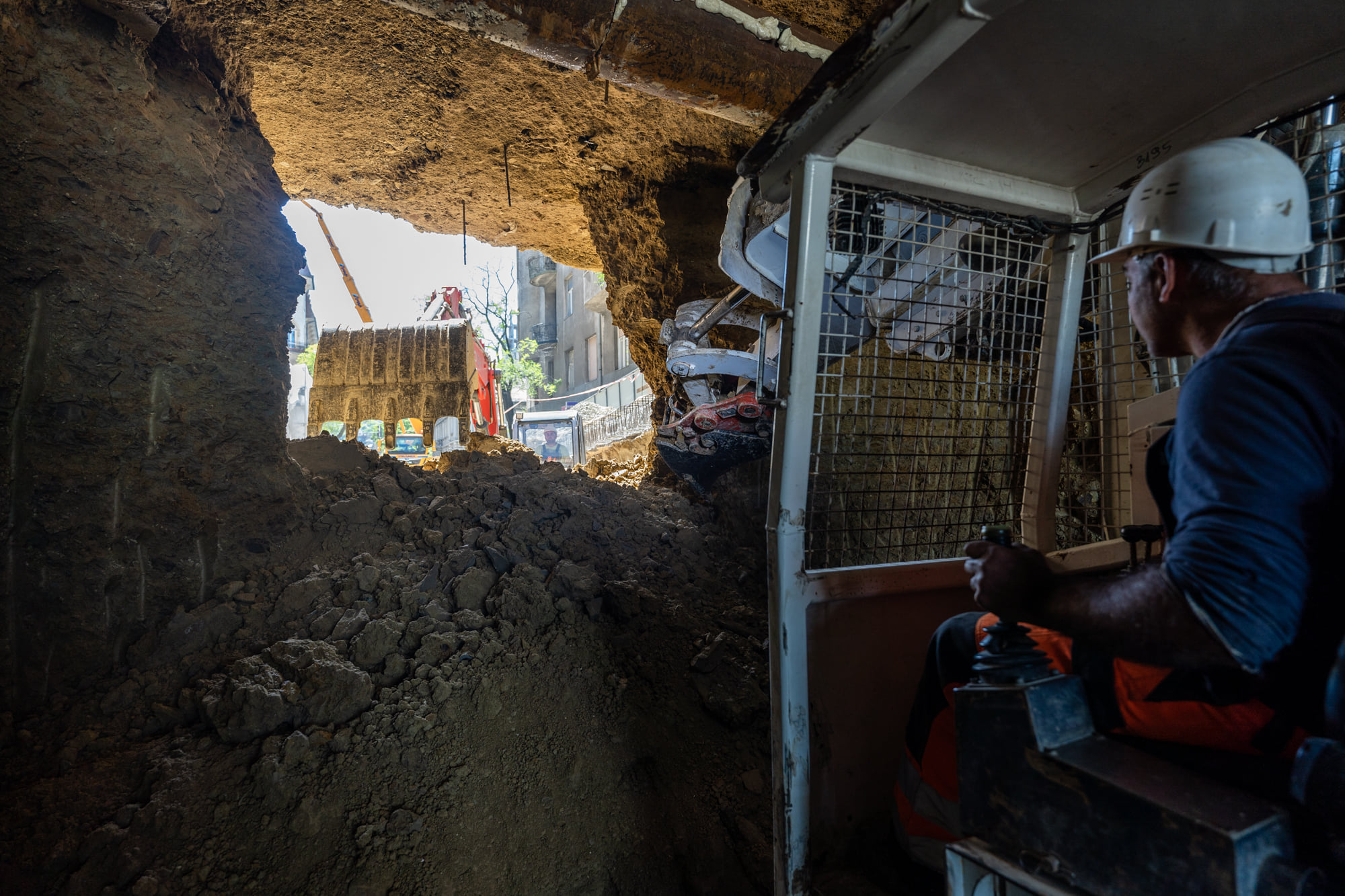
The ends of the tunnel of the gateway under construction met in May 2021 (Source: Market Építő Zrt. Facebook page)
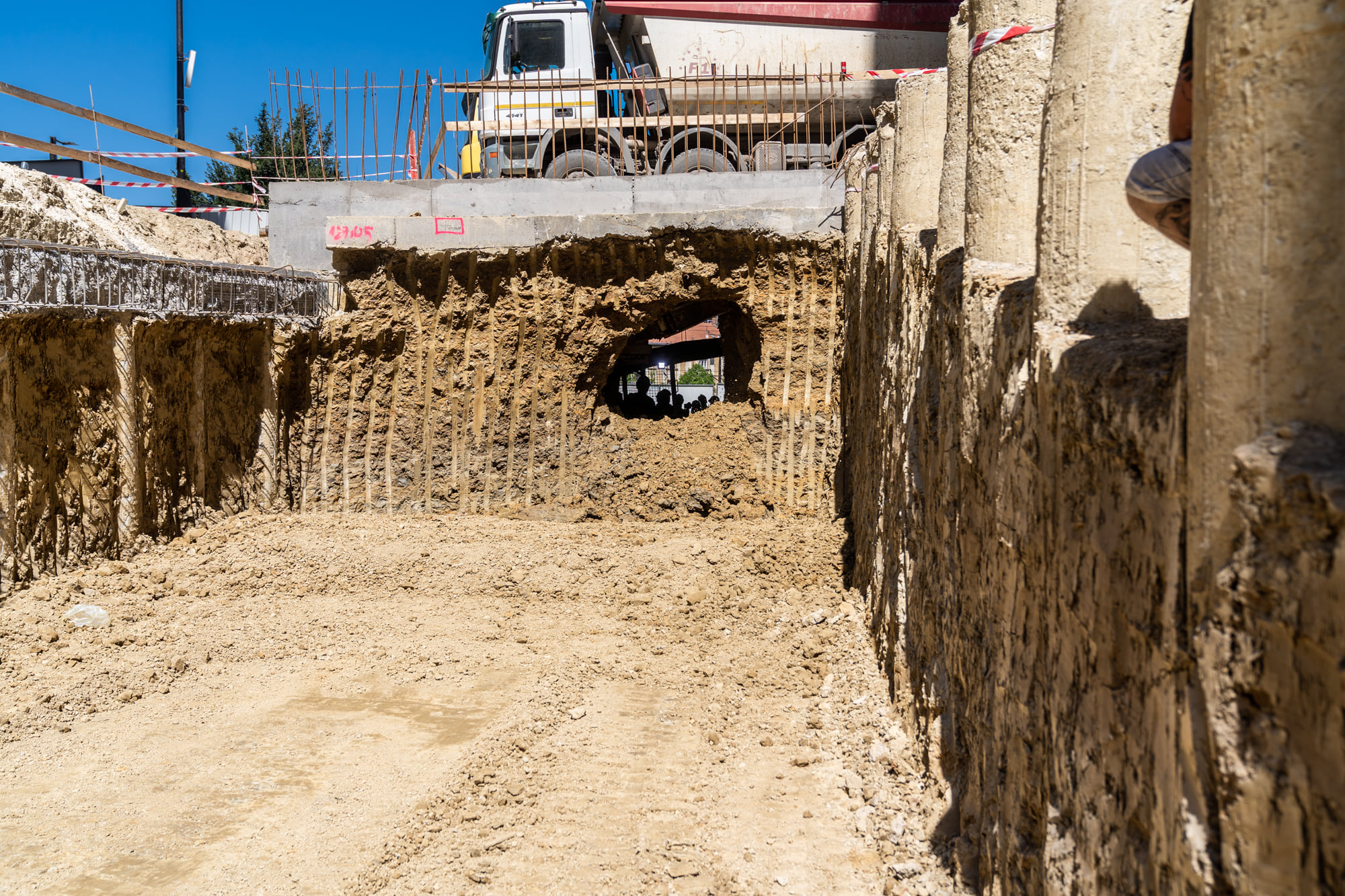
The tunnel of the gateway under construction (Source: Market Építő Zrt. Facebook page)
The design of the gateway required a lot of coordination as the site is located on the border of two districts. Csaba Street and Várfok Street separate the 12th and 2nd Districts, in addition, Széll Kálmán Square belongs to the capital, and the construction is carried out by the National Bank. Despite all this, the architectural plans of the square were prepared by the Építész Stúdió, which also renovated the square, so it is thanks to this that the appearance of the gateway will match the structures of the space in both colour and shape. The gateway has been further expanded since the joining, and work is scheduled to continue until the end of the year.
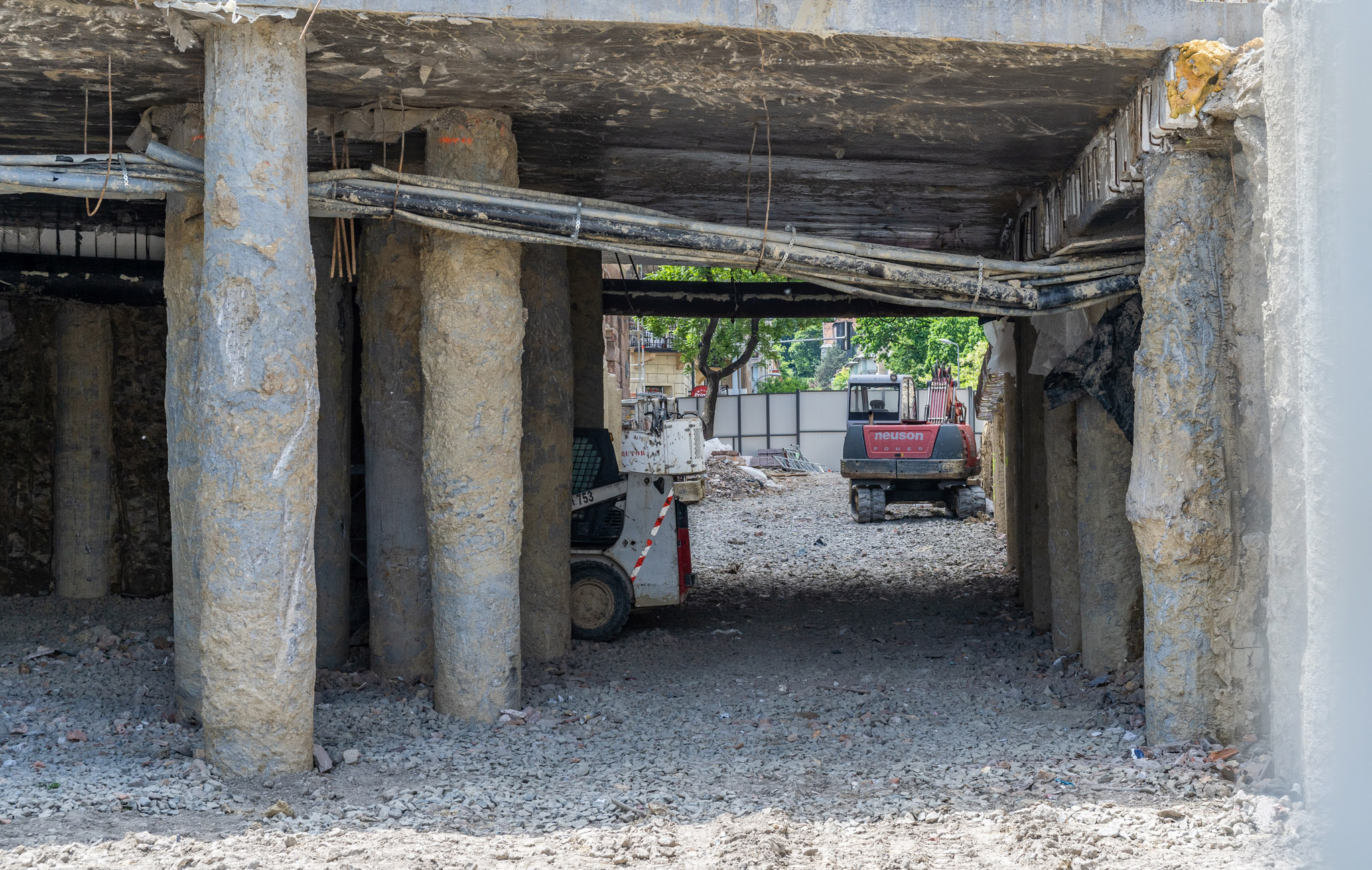
The extended gateway, through which only machines and workers can currently pass (Photo: Balázs Both/pestbuda.hu)
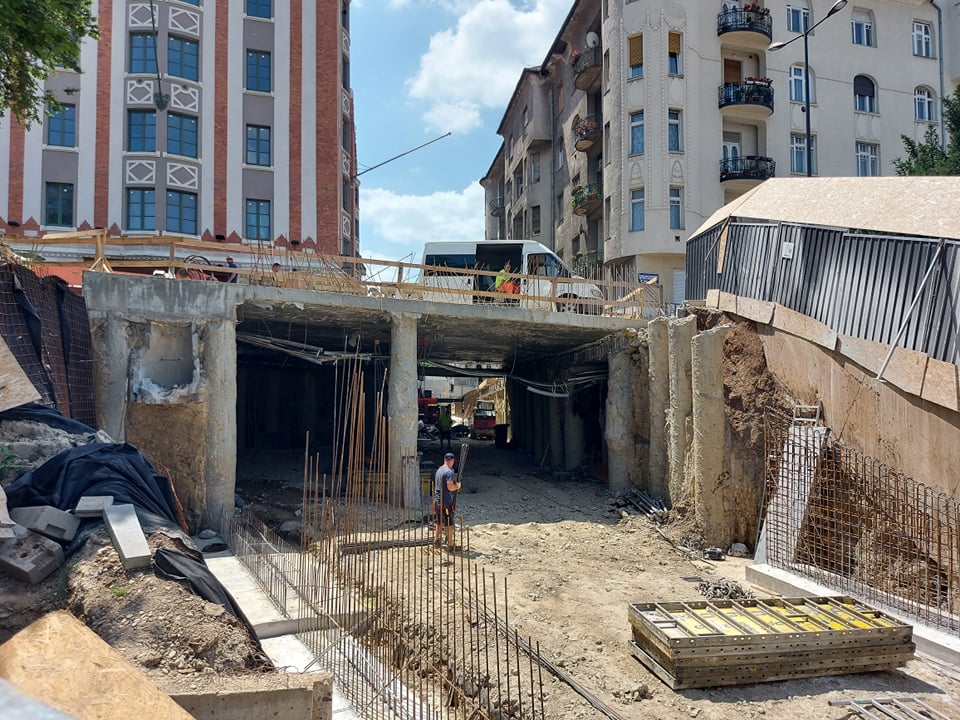
Concrete work necessary for the construction of the passage is currently underway (Photo: Gergely Földváry/pestbuda.hu)
This section of Csaba Street was renamed Sándy Gyula Lane in 2019, in honour of the designer of the Postapalota. Work is currently underway, and for the time being, of course, only machinery and workers can pass through the gateway, but it is planned that by the end of 2021, pedestrians and cyclists, as well as visitors to the new museum, will be able to use it. Hopefully, the palace with Hungarian Art Nouveau decoration, one of the outstanding buildings of the capital, with the pedestrian passage being built next to it, will soon open to the great delight of Budapest residents and tourists.
Cover photo: The ends of the tunnel of the passage met in May 2021 (Source: Market Építő Zrt. Facebook page)

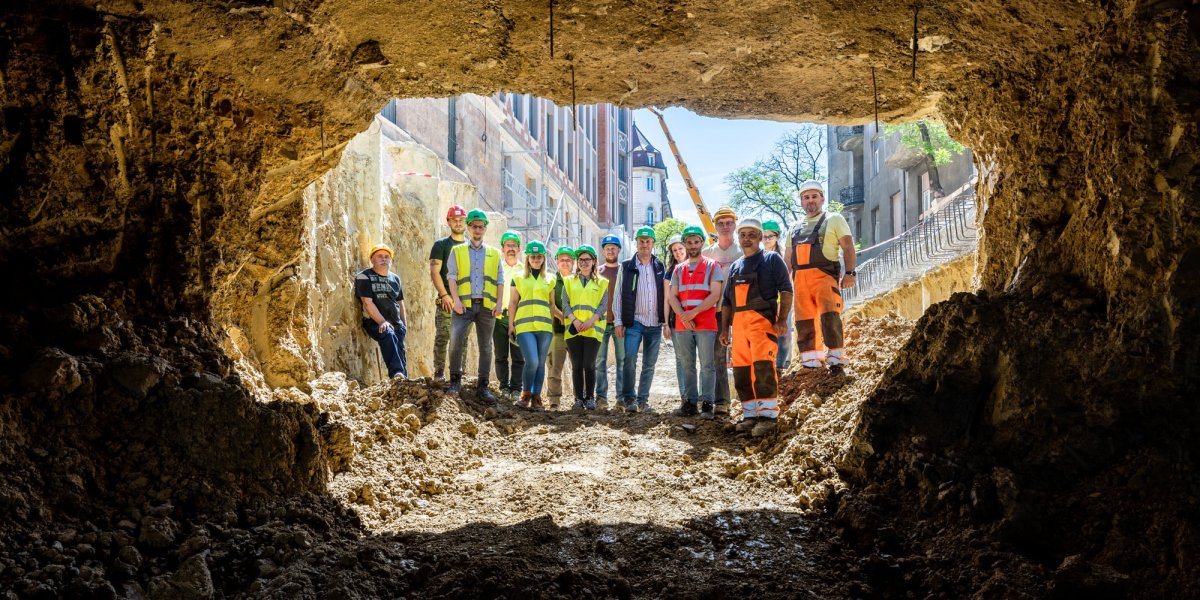



































Hozzászólások
Log in or register to comment!
Login Registration